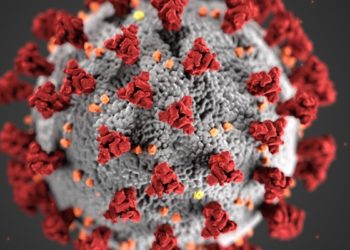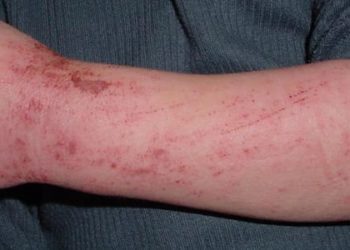Corticosteroid use may not offer benefit for children with acute orbital cellulitis
1. Based on a database of 6,000 pediatric admissions for acute orbital cellulitis, corticosteroid use was not associated with decreased hospital length of stay.
2. Between 2007 and 2018, 23.8% of children admitted for orbital cellulitis received corticosteroids.
Evidence Rating Level: 2 (Good)
Study Rundown: Acute orbital cellulitis is a bacterial infection that is most common in young children, and is usually a complication of bacterial rhinosinusitis. Orbital cellulitis can lead to severe complications, including brain abscess, vision loss, meningitis, and cavernous sinus thrombosis. Hospital admission and prompt initiation of intravenous (IV) antibiotics are therefore the current standard of care. Recent small cohort studies have suggested that systemic corticosteroids may decrease orbital inflammation and reduce average hospital length of stay (LOS). This study aimed to determine whether corticosteroids were associated with decreased LOS or with other markers for complication rates in a large database. Based on nearly 6,000 admissions, 23.8% of children were prescribed corticosteroids. These children were more likely to have complicated orbital cellulitis. Rates of corticosteroid use varied widely by hospital. Overall, corticosteroid use was associated with a longer rather than shorter median LOS, although once the model was adjusted for potential confounders there was no association between corticosteroid use and LOS. This study has several limitations. Data on corticosteroid duration and dosing was not included and could potentially account for some differences in outcomes. The initial association of corticosteroid use with markers for complications suggests that corticosteroids were often used in sicker children. There is a need for prospective, controlled studies to identify specific clinical scenarios in which corticosteroid use may be appropriate. Overall, however, this large retrospective study suggests that the role for corticosteroids in the standard management of acute orbital cellulitis may be limited.
Click to read the study in Pediatrics
Relevant Reading: Management of pediatric orbital cellulitis: A systematic review
In-Depth [retrospective cohort]: This study used data from the Pediatric Health Information System (PHIS) registry and included inpatient admissions of children aged 0-17 years with a diagnosis of orbital cellulitis between 2007 and 2018. Children with underlying complex chronic diseases and other diagnoses like asthma associated with corticosteroid use were excluded. This led to the inclusion of only 49% of the orbital cellulitis encounters in the database. Among 51 hospitals included in the data, rates of corticosteroid use ranged from 1.9% to 73.7%, with 11 hospitals falling more than 3 standard deviations away from the overall mean. Generalized estimating equations models were used to identify associations with LOS. A sensitivity analysis was performed and also showed no association between LOS and corticosteroid use in patients not requiring PICU admission. Corticosteroid use was positively associated with surgery after day 2 of the admission (odds ratio 2.05) and 30-day related readmission (odds ratio 2.40) in an adjusted model.
Image: PD
©2021 2 Minute Medicine, Inc. All rights reserved. No works may be reproduced without expressed written consent from 2 Minute Medicine, Inc. Inquire about licensing here. No article should be construed as medical advice and is not intended as such by the authors or by 2 Minute Medicine, Inc.







